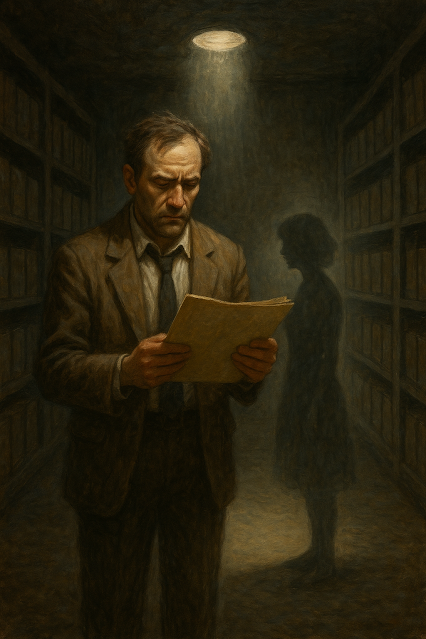In a rather ordinary country, located on a planet well known to everyone, a decision was once made: everyone must be happy. The resolution was passed unanimously, from the top down, at a session of the Committee for National Joy. The official protocol read: “Happiness is the natural state of a citizen in a developed society. If it is not observed, it must be created.”
Thus
began the implementation of the nationwide program: “The Happiness Formula.” In
order to bring joy to the masses, the process had to be industrialized. The
first step was the creation of a cutting-edge scientific institution — the
Central Laboratory for Emotional Stabilization, popularly known as the
Happiness Lab.
The scientists, who wore white coats but reported to the Ministry of Wellbeing, were given a task: to synthesize a chemical formula for happiness — universal, yet adaptable to the “social temperament profile of the citizen.” Three scientific-state criteria for happiness were proposed and officially approved:
–
Happiness is the absence of fear;
– Happiness is the absence of memory;
– Happiness is the chemical stability of consciousness.
After
six years of trials and the disappearance of eight employees, molecule N17 was
developed. Officially called “Normaline,” it was colloquially known as “the
peace pill.”
Normaline
was administered in two forms: orally and subcutaneously. The first produced a
gentle effect — smiling, teary gratitude toward the government, a complete
absence of anxious memories. The second induced lasting euphoria and cessation
of speech. This was considered the “highest form of agreement with life.”
The
project was headed by Dr. Grigory Mavrin, a specialist in psycho-chemistry and
a former distribution engineer. In the early years, he enthusiastically spoke
of a “revolution of the soul.” But gradually, something began to change. His
assistant Irina stopped recognizing her colleagues. Words like “question,”
“son,” and “past” disappeared from vocabulary like outdated terms. In their
place came new slogans: “Tranquility is truth,” “Oblivion is strength,”
“Chemistry is the mother of joy.”
Mavrin
began to notice fewer and fewer staff around him each day. Reports were
simplified. Emotions dulled. His own memories of his wife began to fade. He
tried to find them — in his personnel file, in the archives, in himself — but
found only emptiness.
One day, he tried to ask: “But where is...” — but his voice broke. Instead, he said: “I feel fine.” His tongue obeyed the formula.
Meanwhile,
the project became a matter of national pride. The Lab shipped tons of
Normaline daily to special distribution centers. The packages were accompanied
by posters reading: “Citizen! Are you happy yet?” and “Joy is your duty to the
Motherland!”
Complaints became rare — they simply weren’t recorded. Negative emotions were interpreted as signs of chemical instability and treated with an additional dose. Those who did not respond were sent to a “sanatorium” — a mysterious place no one knew much about, except one thing: no one ever came back. But no one expected them to. Because happiness was everywhere. And in a world of smiles, there was no place for someone else’s pain.
One
night, Mavrin woke up. He had dreamed of a face. A woman’s. He didn’t know
whose. It disappeared as he tried to approach it. In the morning, he went to
the Lab and attempted to shut down the main distributor. The machine didn’t
recognize him. The biometric scanner replied: “Error: subject registered as
patient.”
Panicked,
he ran down the corridor — but the corridor no longer led to the administrative
block. It led to a ward. The walls were padded. He saw Irina there. She was
smiling and drawing a sun on the floor.
“Grigory,
you’re back again? How lovely.” She handed him a pill. “Take it. Everything
will fall back into place.”
He
took it without looking and swallowed. Smiled. A poster hung on the wall:
“Happiness is peace, peace is happiness.”
And everything was fine again.
Somewhere
deep inside, beneath the layers of white light and the calm voice whispering,
“Everything is fine,” a thought stirred. Could happiness be the pain we share?
The memory that is unbearable to carry — and impossible to let go of? But the
thought quieted. And he smiled again.
And
outside, day was breaking once more, and our doctors smiled — because we no
longer feared, no longer wept, no longer remembered.
We were happy.
All sixty thousand patients of Sector N.




Комментариев нет:
Отправить комментарий